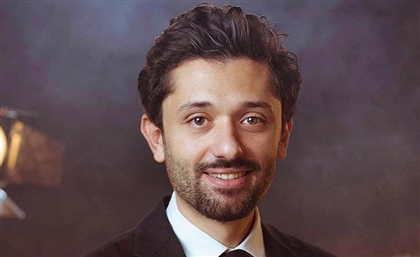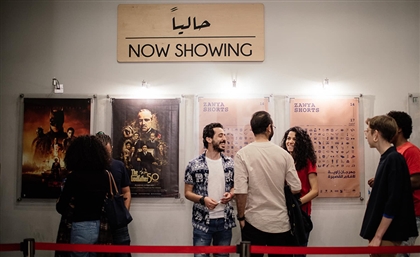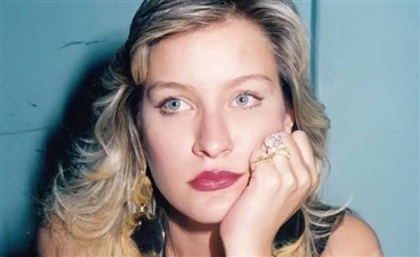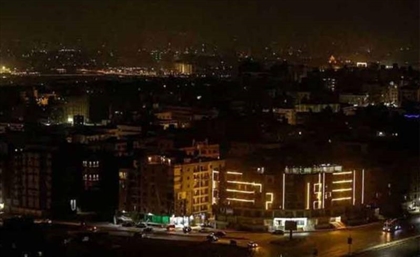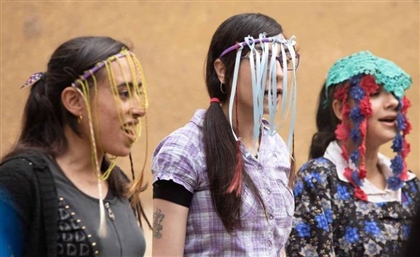9 Egyptian Movies That Define Cairo
From the very heart of the glorious city to the poorest of slums on its outskirts, Egyptian cinema managed to capture Cairo's human and cultural landscape in these 9 masterpieces.
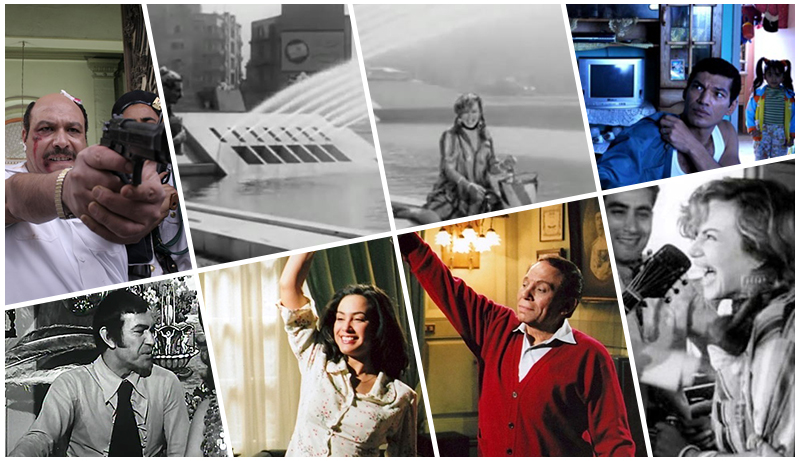
It's our personal belief that when the term love-hate was first coined, it was most probably by someone describing how they feel about Cairo. Life in this central and dynamic capital takes a tremendous toll on us, yet it captures our soul again with a spirit and a character so unique, unlike any other city in the world, that we can't help but fall back in love with it. As mighty as Cairo has been throughout its long history, it's also been blessed with bearing the nickname Hollywood of The East. The Egyptian capital led the region with an influential and powerful movie industry, one which, overtime, produced diverse cinematic masterpieces soaked with the spirit of the great city where their stories were set. Here's a list of the 9 best movies that truly capture the spirit of Cairo.
Bab El-Hadid (The Steel Door)
Scene of Bab El Hadid shot in Ramses Square, which had a beautiful fountain that we now call October Bridge
Golden-era Egyptian movies manage to always portrait Cairo at its most glamorous, but Youssef Shahin's 1958 masterpiece Bab El-Hadid (The Steel Door) truly captured the struggle for survival in the very centre of Cairo for the less fortunate. The plot examines the lives of a number of people working at a Cairo Train Station in different informal jobs, which is why they are constantly being chased away by the station's police guards, but they always come back. One mentally-troubled character, who's also a migrant from Upper Egypt, Qenawy (Youssef Shahin), begins developing intense sexual fantasies about Hannouma (Hend Roustom), a soda vendor. Hannouma is, however, set to marry a portal working in the station (Farid). Qenawy gets increasingly repressed which causes his sexual fantasies to become even more aggressive, and even deadly. The movie truly captures the cruelty and duality of Cairo, where the majority are left in the chaos, experiencing the poorest of living conditions and just a few live in mansions with rosy gardens and tall brick walls, which still stands true about Cairo today.
Omaret Yacoubian (The Yacoubian Building) Famous scene of 'Omaret Yacoubia' shot in Talaat Harb Squar, where the protagonist recounts the glorious bygone days of downtown Cairo
Famous scene of 'Omaret Yacoubia' shot in Talaat Harb Squar, where the protagonist recounts the glorious bygone days of downtown Cairo
Cairo has a dynamic complex story; over decades, everything changes about it except its buildings and streets, in which its soul remains trapped. The brilliant film adaptation of Alaa Al Aswany's literary masterpiece of the same name, Yacoubian Building, revolves around the residents of what was once the city's fanciest building in the heart of Downtown Cairo. The historic building, built in a 18th century European architectural style, like its residents, falls into decay in the 80s and the 90s, and gets entrapped by the chaos and madness of modern day Cairo. The all-star cast portrays a diverse mix of Egyptians with insanely different socioeconomic and cultural backgrounds, who are connected through the building yet have drastically different stories.
Ehky Ya Shahrazad (Scheherazade, Tell Me a Story) Scene from Ehky Ya Shahrazad shot in an impoverished Cairo neighborhood showing 3 Cairene sisters who society manipulates because they're deemed weak and lost for not having a man
Scene from Ehky Ya Shahrazad shot in an impoverished Cairo neighborhood showing 3 Cairene sisters who society manipulates because they're deemed weak and lost for not having a man
This is probably one of the most underrated movies on the list, Mona Zaki outdoes herself in a bold character as a TV host who uses her show to shed the light on women's issues in the city, one of the stories on her successful talk show is about a family of three sisters living in one of Cairo's poorest slums. An attractive guy working in a store near where they live manipulates all three sisters to sleep with him. In Cairo, men who sleep around are studs, while women who do the same are forever stigmatised and shamed by everyone, even other women. When the oldest sister finds out, she murders him and sets his body on fire to take avenge her and her sisters' honour. The plot examines how a portion of Cairene women have reached an advanced level in independence of thought, belief, and choice of lifestyle, while others are left behind in Cairo's poorest areas to fall prey to abuse and manipulation, without opportunities and knowledge to better their lives and be independent, making them specially vulnerable to abuse.
678 Scene from 678 very realistically sepicting the anxiety Egyptian women go through in public transportation
Scene from 678 very realistically sepicting the anxiety Egyptian women go through in public transportation
You can't be an Egyptian woman living in Cairo today and not be constantly worried or aware of the possibility that you might get sexually harassed in public. 678, which is based on true stories, brilliantly captures the heartbreaking details of the constant sexual harassment three Egyptian women of different social classes experience on the streets of Cairo. The poorest of the women, who is forced to take the bus and subsequently gets much more perverted touches, starts retaliating by secretly stabbing her harassers with a tiny knife. The richest of them leaves her husband after he lets her down by not supporting her after she gets harassed in a highly-publicised case, and instead launches a national initiative to shed light on the phenomenon and raise awareness. The heartbreaking survival story is the most accurate portrayal of Egyptian women's strive for a safer and less sexually violent version of Cairo.
El Erhab Wel Kabab (Terrorism and Kebab) Scene from El Erhab Wel Kabab shot in Mogammaa El Tahrir
Scene from El Erhab Wel Kabab shot in Mogammaa El Tahrir
The popular saying goes 'why die and go to hell when you can go to Mogamaa El Tahrir'. Well it doesn't, but it should. The iconic 1940s modernist building was built in the heart of Cairo as an all-in-one administrative building, it was inaugurated by the last of Mohamed Aly's Dynasty, King Farouk in 1949. By the 90s, the building became an established symbol of Egyptian bureaucracy and corruption, which the movie suggests leads to violence and terrorism. The plot centres on a frustrated citizen who suffers the wrath and inefficiency of the Mogammaa, before a civil servant pulls the final straw and bluntly ignores him so he could catch the prayer on time. The man loses whatever sense he had in him and attacks the religious employee, inadvertently ending up holding a number of employees and citizens hostages at gun point in the building. The hostages, who are from different age groups, genders, and backgrounds, unite with their jailer, and, together, they enforce demands on the government and secure the building from police infiltration. The narrative touches down on extremism, sex, taboos, and politics in our overly populated and overly stressful capital. The 1992 film portrays the collective Cairene experience as we've all had our share of violent thoughts while trying to get something done at the Mogammaa.
Tharthara Fawq El-Nil (Adrift on the Nile) Scene from Tharthara Fawq Al-Neel shot from a boathouse overlooking the Nile in Cairo. Similar boathouses still line up along Agouza's Nile banks until today
Scene from Tharthara Fawq Al-Neel shot from a boathouse overlooking the Nile in Cairo. Similar boathouses still line up along Agouza's Nile banks until today
After the 1967 Israeli invasion of Sinai and parts of Syria and Palestine, daily life for the Cairene citizen took a drastic turn to the worst with the country suffering in every sector as a result of the devastating war and the anticipated one. A group of frustrated young and middle-aged Cairenes routinely attempt to escape the disappointing daily reality by gathering in a friend's boathouse near central Cairo, where they drink, do drugs, and contemplate how the war and the city's vices conquered their dreams. The book on which the movie is based is written by Novel Prize winner Naguib Mahfouz.
Banat West El-Balad (Downtown Girls) Scene from Banat West El-Balad shot in Cairo's metro in what seems like Sadat Station. Those Ring telephone booths are luckily now just a memory
Scene from Banat West El-Balad shot in Cairo's metro in what seems like Sadat Station. Those Ring telephone booths are luckily now just a memory
The simple tale of two Cairene middle class young women who live in 2005 Cairo. On their way to work in Downtown Cairo, they commute in the metro where they meet two handsome young men, which is when things start getting messy. The dramatic events sharply portray the contradictions and choices Cairene women are faced with. One of the characters ends up snapping the dream husband who could finally elevate her from her simple life, while the other stops waiting for the knight in shining armour to save her, deciding instead to save herself by working her way up a career in air hospitality and becoming a successful independent woman. The movie remains stereotypical in the choices all women must face; marriage OR career. But it can be overlooked, because it is a true representation of what the average Cairene woman experiences.
Heya Fawda (Chaos, This Is) Scene from Heya Fawda capturing the height of police brutality in Cairo's police force under Mubarak
Scene from Heya Fawda capturing the height of police brutality in Cairo's police force under Mubarak
Police corruption reached unprecedented levels during the late years of Egypt's deposed dictator Hosny Mubarak's rule. The directorial tour-de-force Khaled Youssef unambiguously captures the phenomena of bribery and police corruption with the iconic character of Hatem (Khaled Saleh), a low rank police officer who financially extorts and abuses his prisoners as well as his innocent neighbours. The movie was shot in a period of heightened political opposition to the government and ends in a new-age classic scene where the prisoners and the citizens unite in their pursuit to destroy Hatem, which was a precise prediction of the revolution of January 25th, changing the face of this city and country once and for all. In most interpretations, Hatem is believed to symbolised the government with all its corruption and abuse under Mubarak.
Ba7eb El Cima (I Love Cinema) Scene from Baheb El Cima
Scene from Baheb El Cima
In the depth of Cairo's historic predominantly Coptic neighbourhood of Shoubra, a conservative orthodox man is married to an open-minded protestant, and together they have a child who develops a fascination with the movies and movie theatres, which his strict father brutally prohibits. The film, which portrays the complex relationship between sex, religion, and society, highlighted aspects of the mentality of the city's Christian population, which is a rare occurrence.
- Previous Article Select 017: Mazen Hamdy
- Next Article UPDATE: Massive Fire Breaks Out in New Cairo




